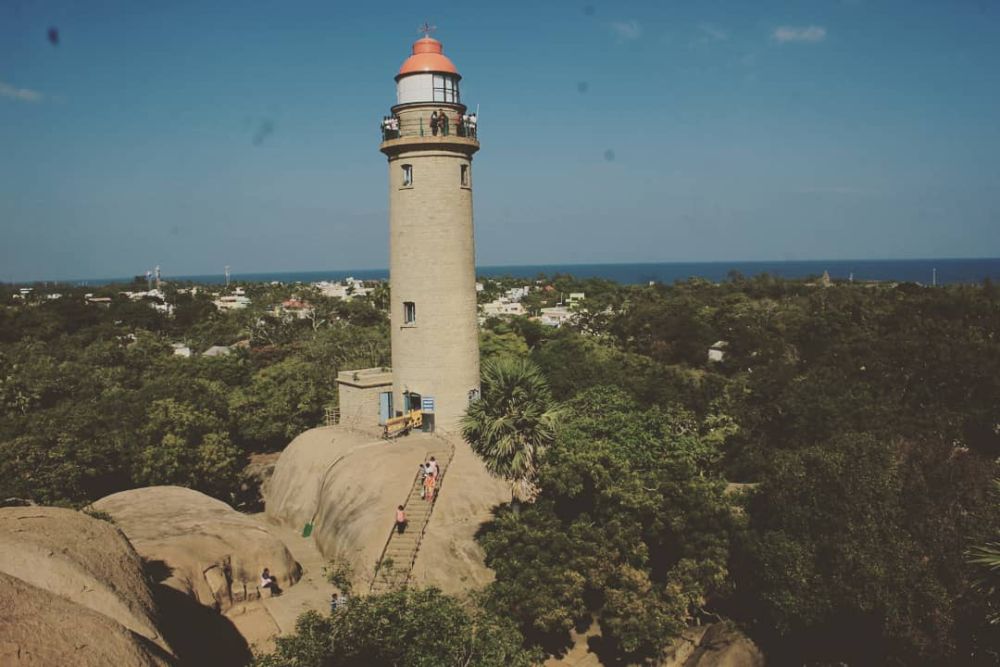

The town of Mahabalipuram, also known as Mamallapuram, in Tamil Nadu, India, has a rich history that dates back to the 7th century. It was a bustling seaport during the reign of the Pallava dynasty and has since become renowned for its stunning rock-cut architecture and ancient temples, attracting tourists from around the world.
The Mahabalipuram Lighthouse stands as a testament to the region's historical importance in navigation and maritime activities. The original lighthouse, believed to have been constructed around 640 AD by the Pallavas, was an open flame on the top of a hill. The modern structure, however, was built by the British in 1887 and is distinguished by its circular masonry tower. This newer lighthouse was one of the many built by the British to guide ships along the Coromandel Coast.
The structure has hence served as a significant beacon for sailors and is an integral part of the area's maritime history. It was opened to tourists in 2011 after being closed for a period due to security reasons, and since then, it has been a major draw for those interested in India’s colonial past and maritime heritage.
Adjacent to the lighthouse, the Lighthouse Heritage Museum showcases the rich maritime legacy of the region. Opened to the public in recent years, this museum adds significant value to the understanding of the lighthouse's historical importance by displaying maritime artifacts, nautical equipment, and detailed information about the evolution of lighthouses in India.
The museum provides a detailed narrative of the technical evolution of lighthouses, from the times when manmade fires served as the initial guides to the latest in modern automated systems. Visitors can engage with exhibits explaining the science behind the functioning of lighthouses, the development of light propagation, and the role of lighthouse keepers.
Given Mahabalipuram's UNESCO World Heritage status, tourism trends indicate a sustained interest in cultural and heritage tourism. The location caters to this by providing tourists with a deep dive into South India's architectural grandeur and historical richness. Over the years, experiential travel has become more popular, with tourists seeking immersive experiences that include local cuisine tasting, craft workshops, and traditional performances.
Eco-tourism has also been on the rise, with initiatives to preserve the coastal environment and its biodiversity gaining traction. Tourists are increasingly interested in responsible travel options that minimize environmental impact and support conservation efforts.
Visitors to the Mahabalipuram Lighthouse and Lighthouse Heritage Museum can expect a combination of historical education and panoramic views of the surrounding area. Climbing to the top of the lighthouse offers a unique perspective of the Bay of Bengal and the ancient city's remarkable monuments. The museum visit complements this experience, providing context and history to what the visitors see from above.
The lighthouse and the museum have become integral parts of the visitor experience in Mahabalipuram, with an increasing number of tourists including them in their itineraries. They remain open to the public throughout the year, with the best time to visit being between October and March when the weather is most pleasant.